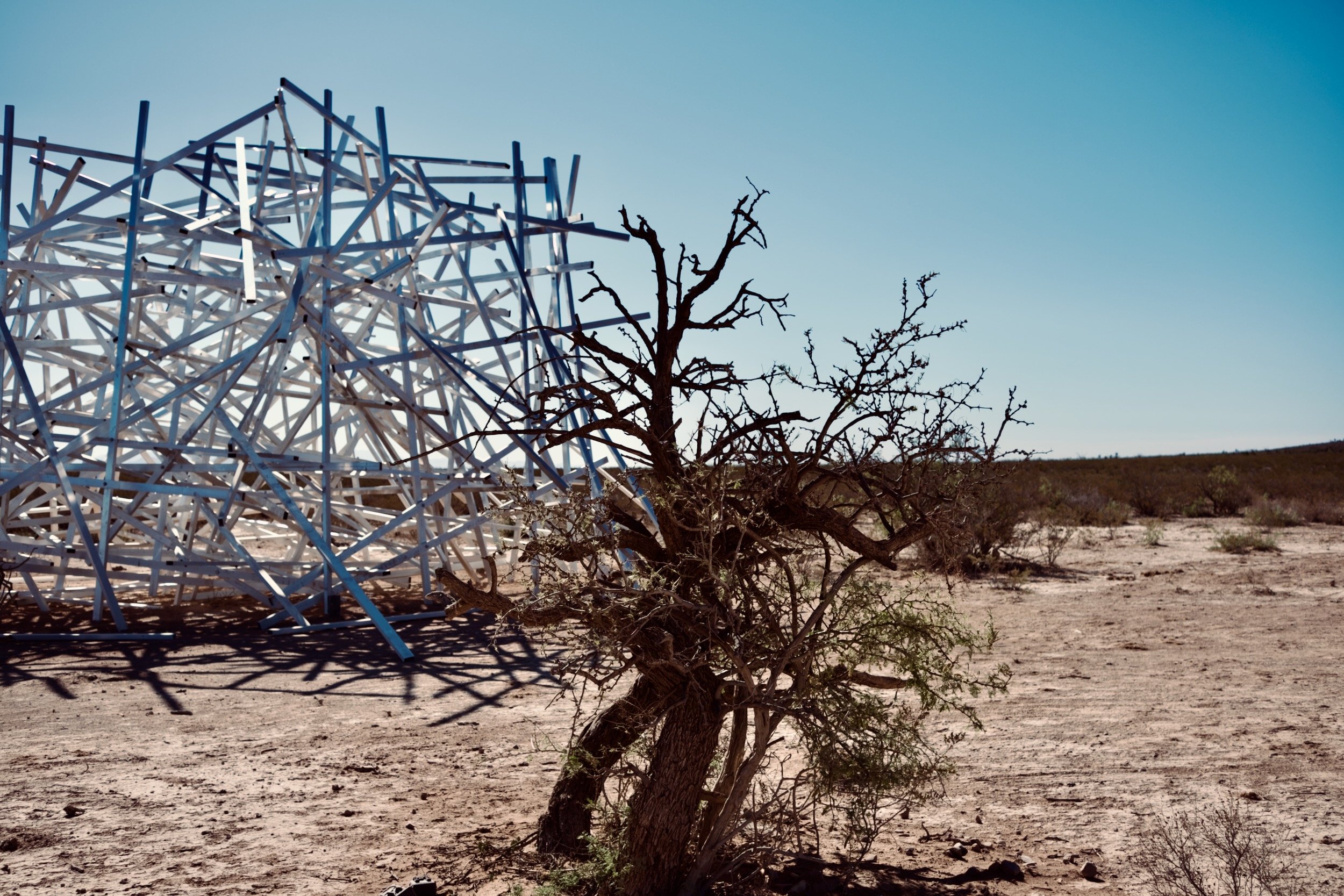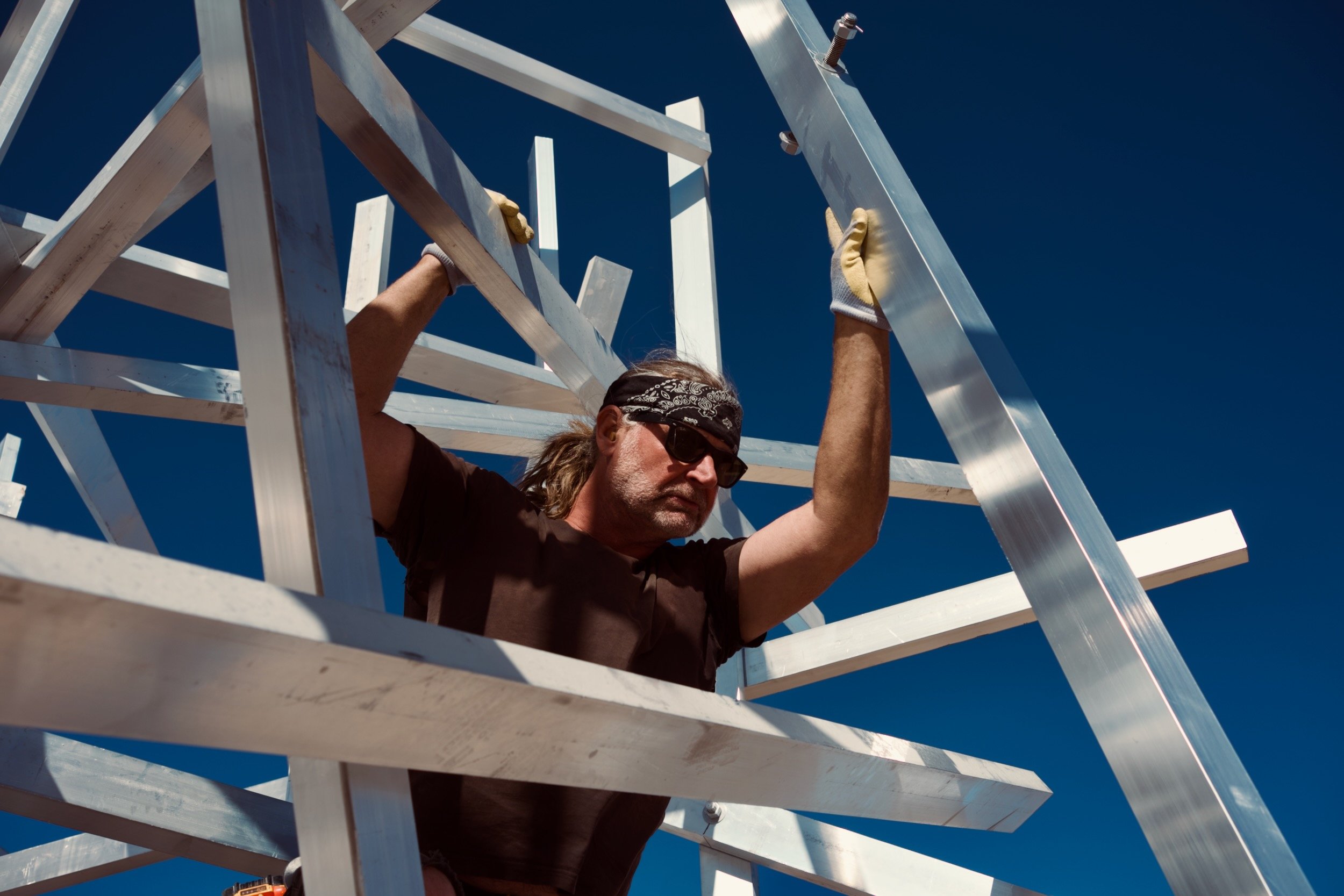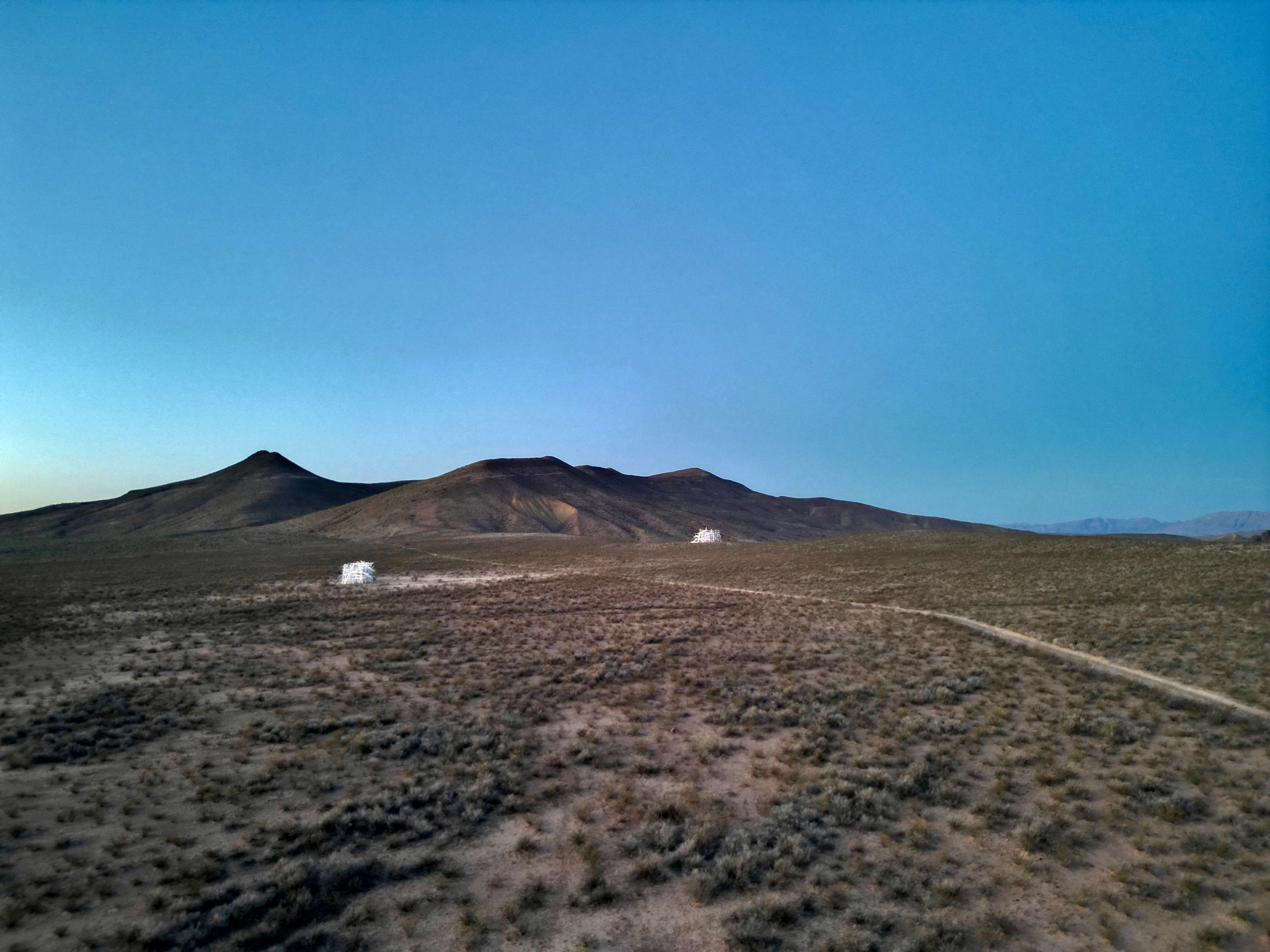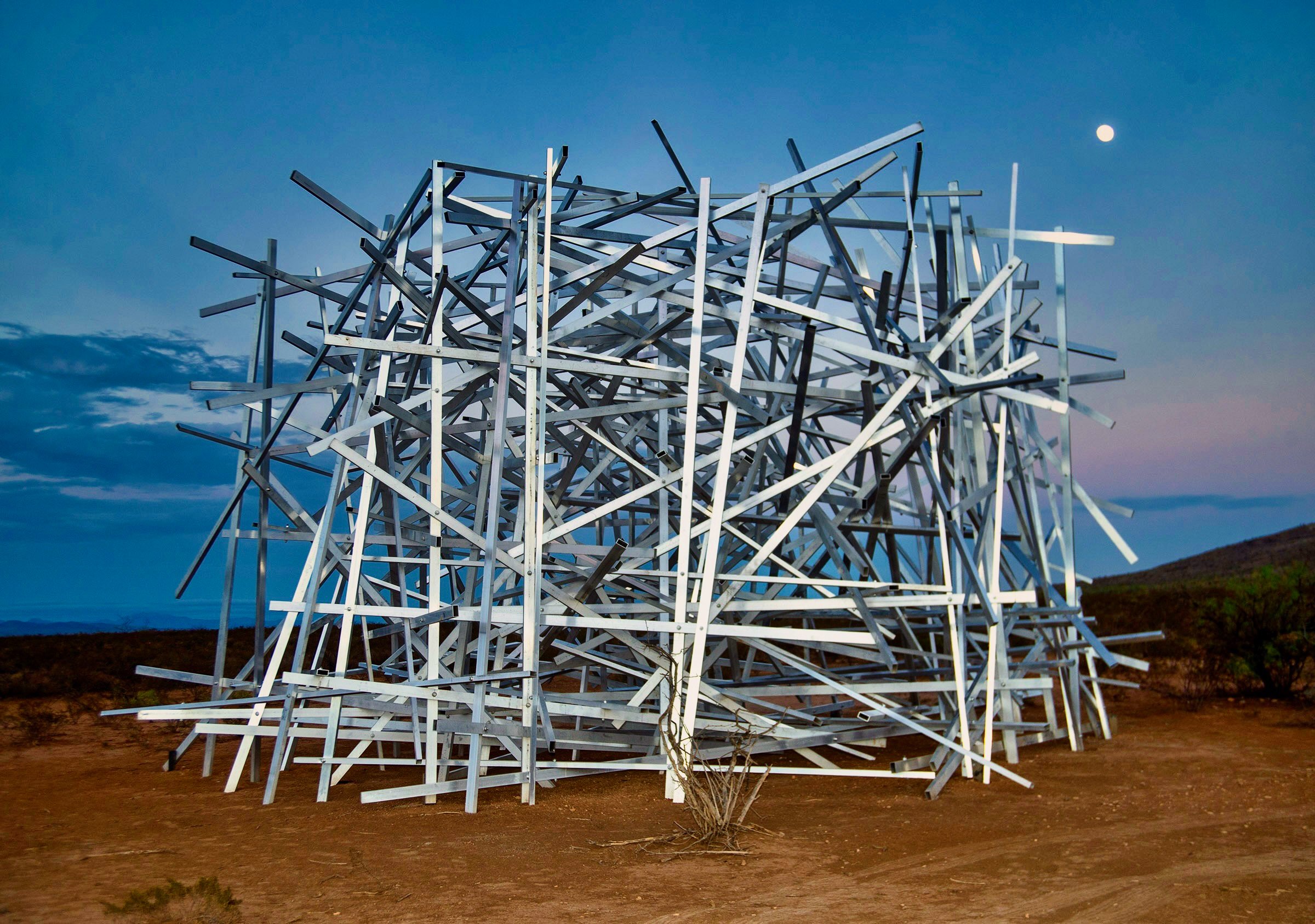
MILE DARK
Matthew Gray’s second
West Texas sculpture
There are blood stains on the metal.
But then again, how could there not be?
First, you’ve got to move it. That means borrowing a trailer and driving to El Paso. Loading $5000 worth of aluminum and unloading it back at the site. Then you’ve got to wrestle each 21-foot long piece into place while the wind tries to tear it from your hands. Often you do this while stretched out in some contorted move that you might see a climber make in a dihedral high on a Yosemite wall, not in the middle of the West Texas desert. Throw in some power tools, cut sections of threaded rod, the occasional cactus underfoot, and yeah, there will be blood.
Matthew Gray has certainly bled for these sculpture projects, both literally and figuratively. Try moving to a tiny desert town where you don’t know anybody and then buying some land nobody wants or cares about. (And then buy some more of this “useless” land, much to the amusement of the county clerk who files the paperwork. Stupid city slicker.)
After completing the first sculpture, Broken Mile, Gray wasted no time in getting after the next one, Mile Dark. While this second act also uses a mile’s worth of aluminum tubing, Mile Dark compresses it into a smaller, more intense footprint. The result is a tight, chaotic tangle of metal that’s even difficult for the wind to squeeze through.
Raising these structures out of the ground has been a one-man show (or sometimes a one-man circus). There’s lots of planning and logistics to work out, tools and drill bits to continually replace, cuts to make, holes to drill. At the site, singlehandedly levering the tubing into place is tough, lonely work, with just the occasional curious cow for company. But the real toll is less physical and more mental. Gray has undertaken these projects with no backing, no support, and no guarantee of making a dent in the art world.
In many of these images, the sculpture is only about 65% complete. Gray will add another trailer load of metal to the already tightly-packed structure. The density gives it a more imposing, serious tone than Broken Mile, making it a more defiant presence in the landscape, standing strong against the wind and painting thick black shadows across the cracked earth. But while Mile Dark stands as a fierce presence on Gray’s property, it is still dwarfed by the immensity and ruggedness of the surrounding landscape. In a way it’s a reflection of our own place in the universe: despite all our advancements, all our technology, we’re still just an insignificant blip in the uncaring vastness of space.
While Gray gets ground down by the desert (and certainly bleeds for his art), he perseveres. He has the foundation set for a third sculpture, the final piece of the trilogy. So even if West Texas chews him up and spits him out, his work will remain.
To view Mile Dark, follow the coordinates for Broken Mile.



















